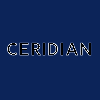Overall, Dayforce demonstrates strong business quality with high customer retention, substantial revenue growth, and a solid market position. Future prospects appear promising, driven by projected growth rates and ongoing innovations in AI and automation; however, employee volume fluctuations could pose challenges.
Analysis Date: February 5, 2025
Last Updated: March 11, 2025
Trailing Twelve Months (TTM) values provide a view of the company's performance over the last year.
Graham Value Metrics
Benjamin Graham's value investing approach focuses on finding stocks with a significant margin of safety between their intrinsic value and market price.
Intrinsic Value
Estimated fair value based on Graham's formula
$1.43
Current Market Price: $51.48
IV/P Ratio: 0.03x (>1.0 indicates undervalued)
Margin of Safety
Gap between intrinsic value and market price
-3502.0000000000005%
Graham recommended a minimum of 20-30% margin of safety
Higher values indicate a greater potential discount to fair value
ROE: 0.7232116992478199
ROA: 0.11846001974333661
Gross Profit Margin: 47.67613636363636
Net Profit Margin: 1.0284090909090908
Trailing Twelve Months (TTM) values provide a view of the company's performance over the last year.
Operating Profit Margin
6.51%
Operating Profit Margin
The operating profit margin of 6.51% indicates that the company is able to generate a reasonable level of profit from its operations.
Low Return on Equity
The return on equity (ROE) is only 0.72%, which is quite low and suggests that the company is not generating a strong return on shareholders' investments.
Low Net Profit Margin
The net profit margin of 1.03% is quite low, indicating that the company is retaining a minimal amount of profit after all expenses, which could be a concern for investors.
About Profitability Metrics
Profitability metrics measure a company's ability to generate earnings relative to its revenue, operating costs, and other relevant metrics. Higher values generally indicate better performance.
Return on Equity (ROE)
Measures how efficiently a company uses its equity to generate profits
0.72%
10%
15%
Higher values indicate better returns for shareholders
TTM (as of 2025-04-16)
Return on Assets (ROA)
Measures how efficiently a company uses its assets to generate profits
0.12%
3%
7%
Higher values indicate better asset utilization
TTM (as of 2025-04-16)
Gross Profit Margin
Percentage of revenue retained after accounting for cost of goods sold
47.68%
20%
40%
Higher values indicate better efficiency in production
TTM (as of 2025-04-16)
Net Profit Margin
Percentage of revenue retained after accounting for all expenses
1.03%
8%
15%
Higher values indicate better overall profitability
TTM (as of 2025-04-16)
Strong Liquidity Ratios
The current ratio of 3.38 and quick ratio of 3.38 suggest that the company has a strong ability to meet its short-term obligations without selling inventory.
Low Debt Levels
0.009
Debt-to-Equity Ratio
0.003
Debt-to-Assets Ratio
With a debt-to-equity ratio of 0.009 and debt-to-assets ratio of 0.003, the company is conservatively financed, indicating strong financial health and low risk from debt.
Interest Coverage Ratio Needs Attention
2.82
Interest Coverage Ratio
The interest coverage ratio of 2.82 indicates that while the company can cover its interest expenses, it's not excessively comfortable, which could be a concern if earnings fluctuate.
About Financial Health Metrics
Financial health metrics assess a company's ability to meet its financial obligations and its overall financial stability.
Debt to Equity Ratio
Total debt divided by total equity
0.01x
1.0x
2.0x
Lower values indicate less financial leverage and risk
Less than 1.0 is conservative, 1.0-2.0 is moderate, >2.0 indicates high risk
Q4 2024
Current Ratio
Current assets divided by current liabilities
3.38x
1.0x
2.0x
Higher values indicate better short-term liquidity
Less than 1.0 is concerning, 1.0-2.0 is adequate, greater than 2.0 is good
Q4 2024


